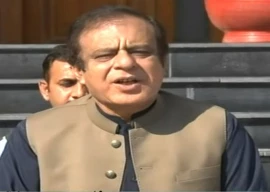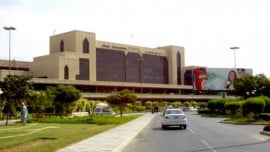
ISLAMABAD: More than two million children in Pakistan, who are of primary-school going age today, do not have the facilities to attend school.
Over 13 million children of middle and secondary school age are also out of school.
The school participation ratio at educational levels higher than these, is four per cent or less.
These statistics were revealed in a report titled “Critical Issues in Education Policy- A citizens’ Review of the National Education Policy 1998-2010” published by Sustainable Development Policy Institute (SDPI).
This report, co-authored by Professor AH Nayyar and Ahmad Salim, further said that Pakistan is counted among the least developed countries in the United Nations Development Programme Human Development Report of 2003. The public sector expenditure on education in Pakistan over the last three decades has been between 1.5 and 2.5 per cent of Gross National Product (GNP), it indicates.
Pakistan’s Education Index is 0.44 whereas the average index of the least developed countries is 0.5 (higher index is better) and that of South Asia is 0.58. The index is based on literacy levels, primary, secondary and tertiary enrollment and government expenditure on education as a percentage of its Gross Domestic Product (GDP).
It is further analysed in the SPDI’s review that Pakistan has a population of over 155 million, which is increasing at a rate of 2.9 per cent annually.
The literacy rate, according to the government, is (approximately) 50 per cent. “This is far below what had been projected in education policies for the past 50 years,” said the report.
The number of students in the public sector schools increased by 2.17 million over a period of two years (2002-03 to 2004-05). During this time, the number of teachers decreased by nearly 20,000. This led to a rise in the average pupil-teacher ratio from 26 to 30. In the same period only 2,200 new schools were opened for these additional 2.17 million students.
In the public sector, a primary school is on the average provided with only 2.5 teachers, a middle school with 7.6, a high school with 18, and an intermediate and degree college with 26 teachers. The average pupil-teacher ratios are 31, 29, 8.6 and 14 respectively.
The SDPI’s report read, “Various Five Year Plans (introduced by the government) have been very generous in setting targets for primary enrollment but never managed to achieve them,” said the SDPI report.
It indicates that the low priority given to education means that in times of financial crisis, which are not uncommon, expenditure on education is invariably among the first to be slashed. The review says, “While inadequate financing is a serious problem, the system of governance is so flawed that whatever amount is allocated is seldom fully utilised.”
Besides financial issues, the review analysed, the educational content of required courses and prescribed textbooks is poor. The curriculum, syllabus and textbooks are geared more towards religious and parochial indoctrination and less towards nurturing intellectual or critical abilities in students.
The report suggests that textbooks be used that are free of any material that incites hatred and false patriotism; textbooks that teach tolerance for and appreciation of the cultural, linguistic and religious diversity of the nation.
The Ministry of Education said that they had already incorporated some of the SDPI’s suggestions and were attempting to standardise textbooks and adopt a uniform (tolerant) educational curriculum.
According to the National Education Policy 2009 published by the Ministry of Education, “Almost one-third of primary school age children remain out of school, a proportion that rises to about three-quarters for secondary school children.”
It further said, “An equal concern is that except for Early Childhood Education, Pakistan’s performance on Gross Enrolment Ratio and Net Enrolment Ratio lags behind its neighbors for the primary level and above.”
The performance on primary completion rate is particularly weak and the problem of drop out rates is severe, as it adds to the number of out-of-school children.
The Ministry of Education document concluded that, “There is a clear need for expanding the provision. At the same time, efforts have to be made to cut the high dropout rates and induce more out-of-school youths back to the school system, particularly girls, whose participation is still very low.”
Published in The Express Tribune, November 22nd, 2010.




































1713509570-0/Taylor-Swift-Album-Release-(1)1713509570-0-270x192.webp)






















COMMENTS (1)
Comments are moderated and generally will be posted if they are on-topic and not abusive.
For more information, please see our Comments FAQ